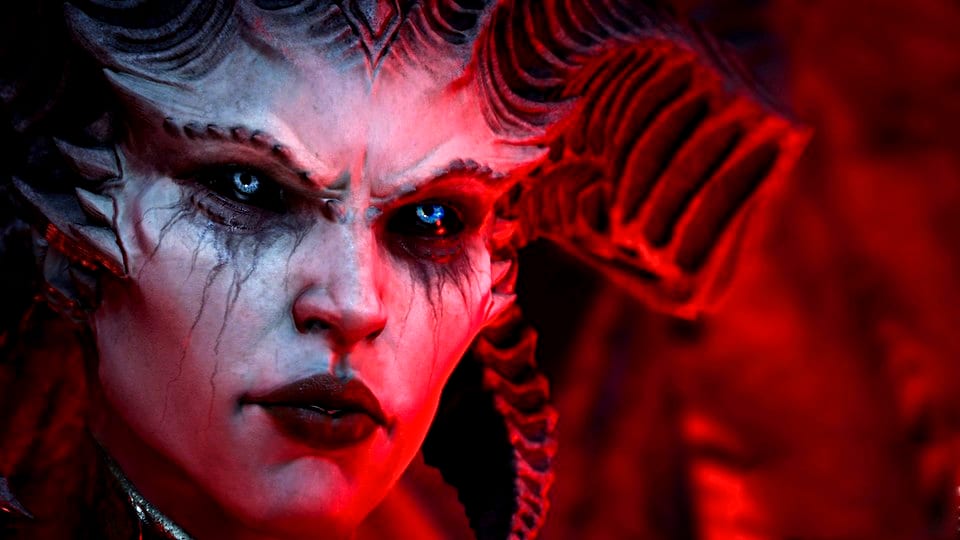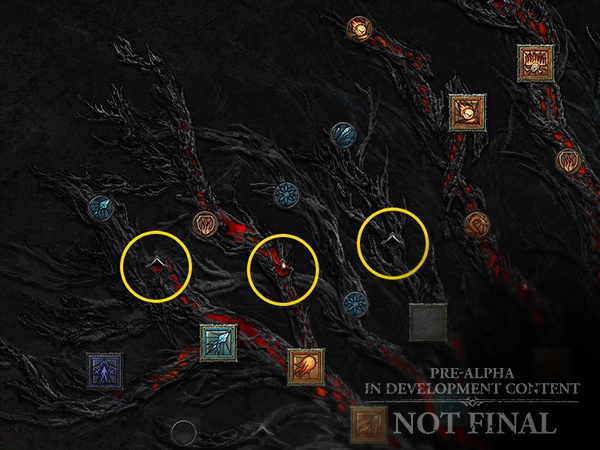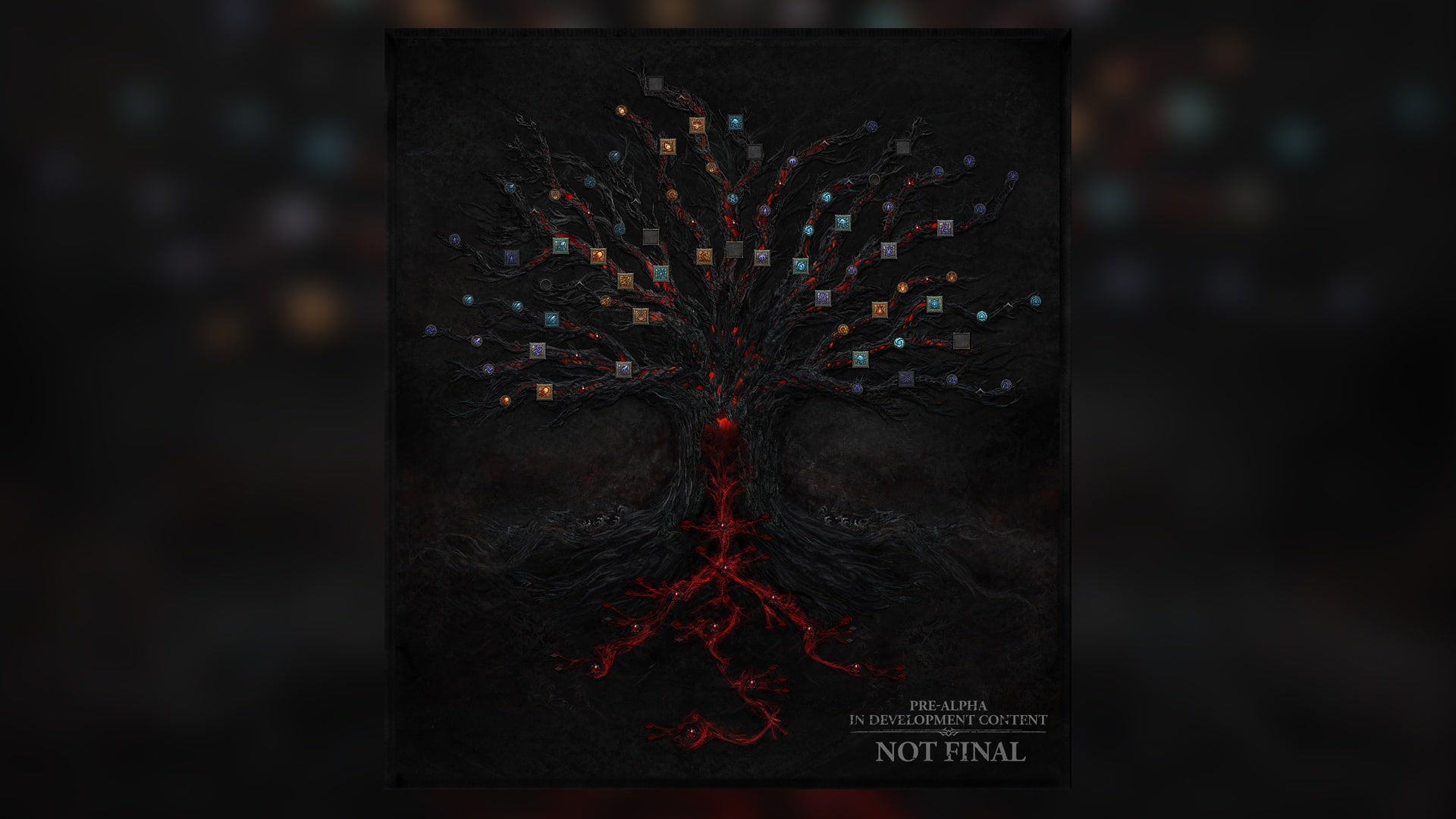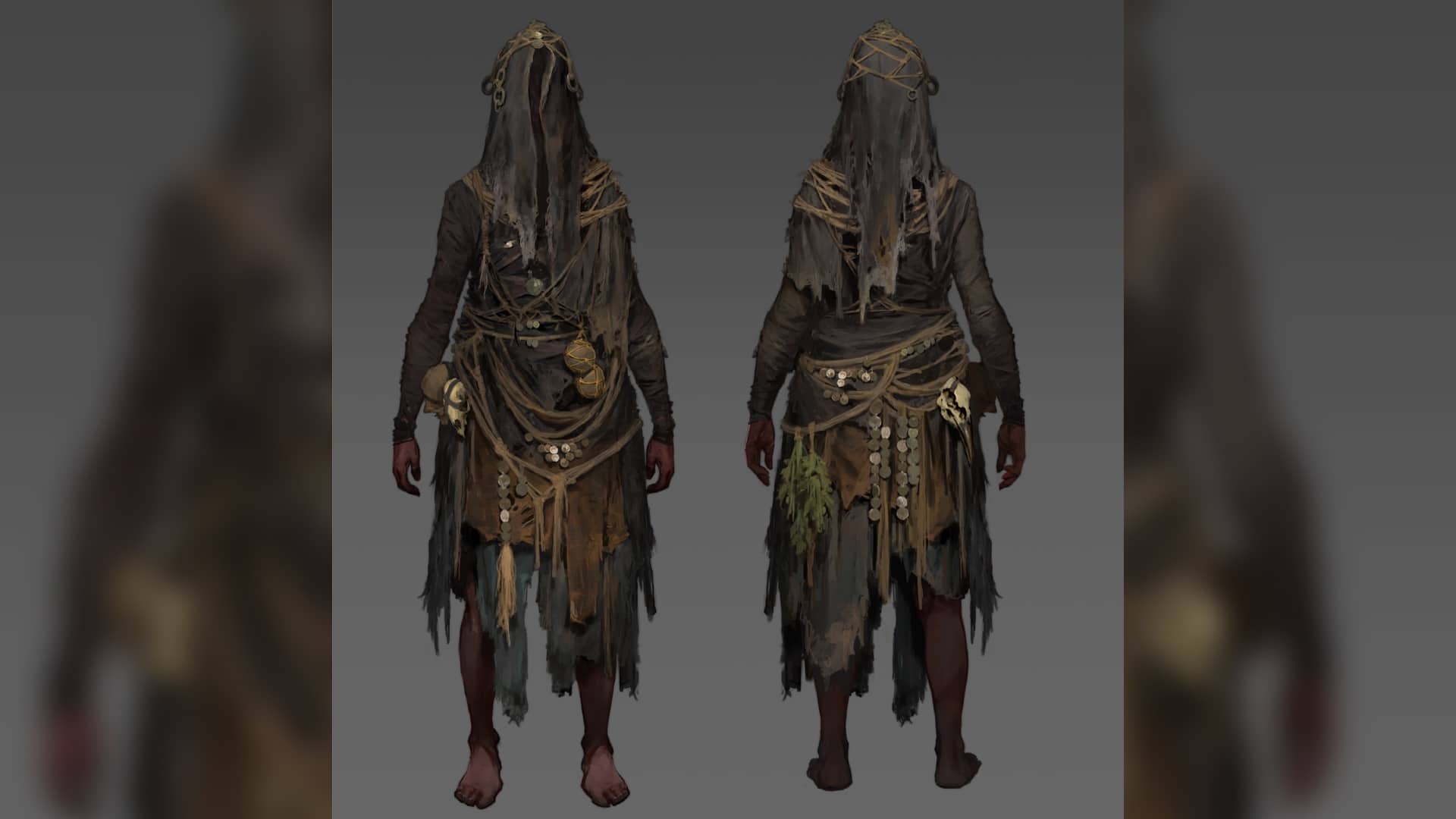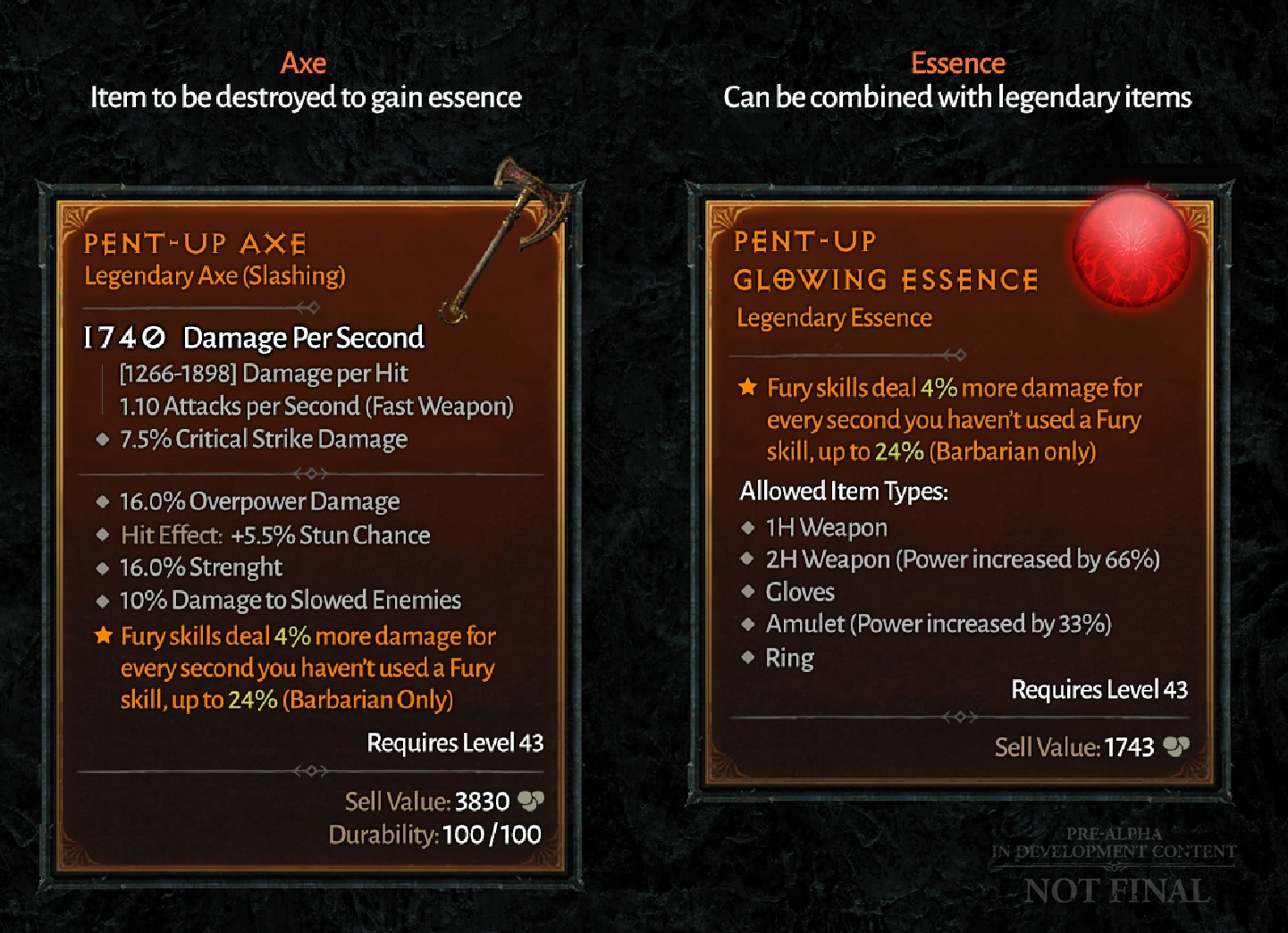Our Diablo expert summarises for you what Blizzard has changed about its action role-playing game in order to fulfil the wishes of series fans.
Diablo has always been synonymous with goosebump atmosphere for me. I only have to think of the melancholic guitar sounds that carried me across the ominous plains of the legendary second part, and a comforting shiver goes down my spine.
And the words that the Prince of Hell said to me in a bloodcurdling tone when we first met still echo deeply in my soul, even after two decades. That’s probably why I like to quote them in a distorted voice when I stumble across unsuspecting fellow players in survival games – hihi.
Of course, the addictive item spiral, the iconic classes and the fast-paced battles are also supporting pillars of the time-honoured action role-playing game cathedral. However, it was the unforgettable characters such as Deckard Cain or the archangel Tyrael, who cavort on its stained glass windows, that gave it its unmistakable charm. The cinematic interludes would then contribute the sinister Gothic architecture in this allegorical comparison.
Into correspondingly large devil’s hoofprints steps Diablo 4, which has already been announced for 2019, but is still somewhat elusive due to numerous upheavals in design and at developer studio Blizzard. At least as far as certain gameplay elements like the move to an open world and forcibly shared with other players are concerned.
Nevertheless, I grinned like a honey-cake horse at the time when the announcement trailer made it unmistakably clear that the fourth part of the series would once again take a significantly darker direction than its direct predecessor.
In this article we take a look at what Blizzard has adapted to meet the wishes of the series fans. If all that has been logged in the developer diaries for months is true, then Diablo 4 could finally reunite the two fan camps of parts 2 and 3.
“Not even death can save you from me “
In the trailer, a few unfortunate soldiers of fortune accidentally free Diablo’s niece Lilith from her banishment, paving the way for an antagonist who is as exciting as she is complex. Mephisto’s daughter was the one who, in an unholy union with the archangel Inarius, created not only the world of Sanctuary but also humanity itself ages ago.
When her lover later wanted to wipe out the children they had together, she instead eradicated all angels and demons from Sanctuary, thus ensuring the continued existence of our species long before the first games.
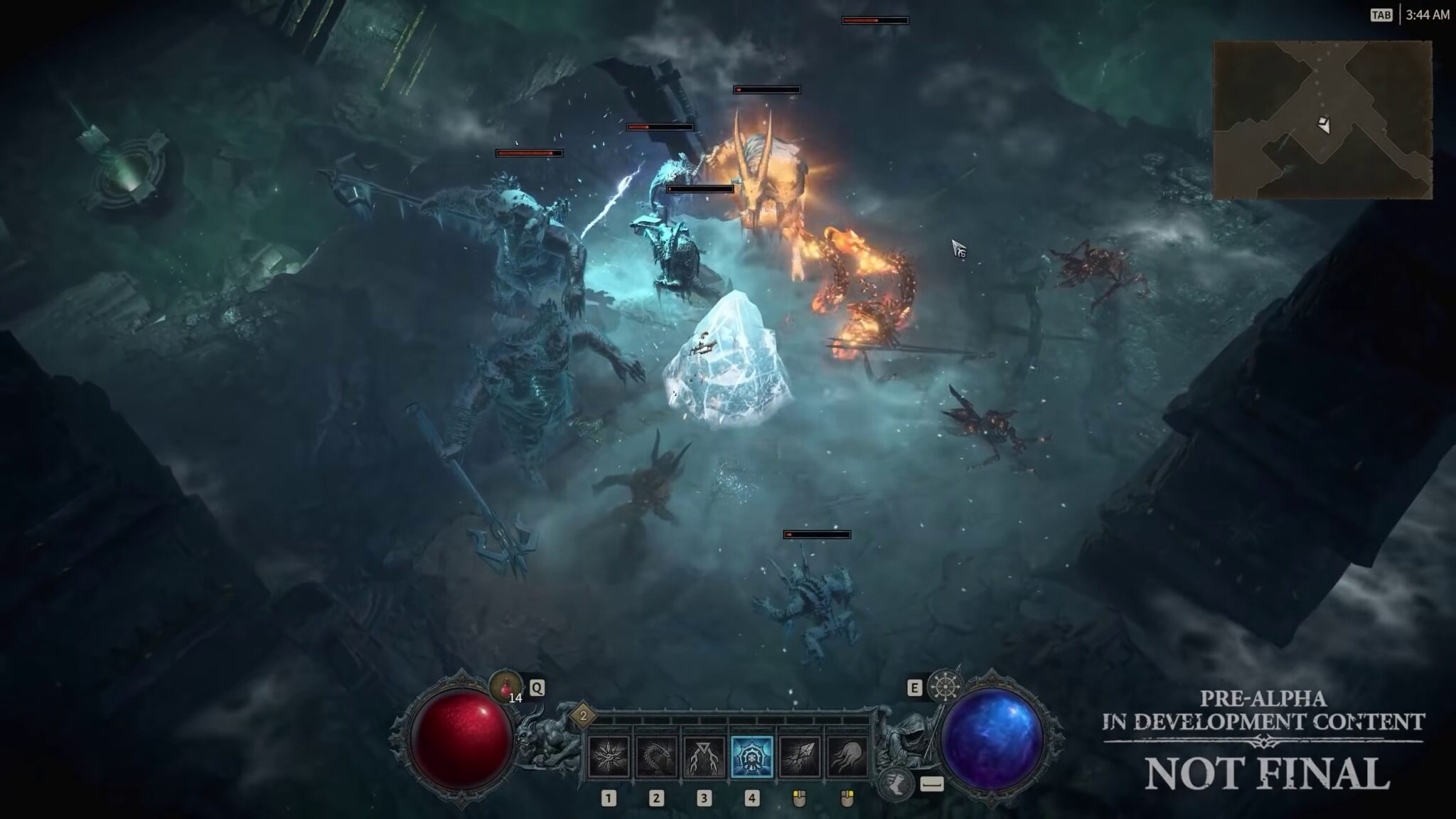
Since Diablo 4’s story takes place several decades after the Angel of Death Malthael’s campaign of destruction from the D3 addon Reaper of Souls, we can only guess how much Lilith is hurting from the loss of 90 percent of her descendants. Let’s hope that her motives in the finished game turn out to be as multifaceted as her past suggests. It would be extremely unfortunate if we had to get rid of them simply for self-protection.
By no means regrettable, on the other hand, are all the gameplay changes that have come through since the original announcement. The most obvious is the departure from the highly simplified character development. The fan call for more depth was clearly heard and has now been turned into tangible features.
If you can’t keep up with all the names, we’ll take you on a short tour to get to know the game:
The origin myth of Sanctuary says that the ancient deity Anu split off all evil from itself before creating the universe. From this pure evil emerged the seven-headed dragon Tathamet. In their great final battle, both perished and from the seven heads emerged the seven evils that to this day wreak suffering and havoc at every opportunity.
The three Great Evils: Diablo, the Prince of Hell, is considered the Lord of Terror and leads the demon hordes together with his two brothers Mephisto, the Lord of Hate, and Baal, the Lord of Destruction.
The four lesser evils: Andariel, Duriel, Azmodan and Belial are among the strongest demons of the Burning Hells after the three brothers. They once rebelled against the trio and banished them to Sanctuary, where after a long struggle the three were imprisoned in three soulstones by the Order of Horadrim.
The previous parts of the series revolved around these Soul Stones and the power of the three Great Evils, which can hardly be contained even within them. As far as we know so far, Diablo 4 will at least see a reunion with Andariel, the Mistress of Torment, and Duriel, the Master of Pain. However, it is more than likely that Diablo will also be allowed to wave in his own game.
Attributes, talent trees and huge boards
Attributes and talent trees are back and more diverse than ever! Each of the five classes planned for release (see box) will receive attribute and skill points as you level up, and we’ll be allowed to distribute them freely afterwards. The attributes are divided into strength, intelligence, dexterity and willpower.
One of these is crucial for each class – in the case of the huntress, for example, skill as usual – but the others also give an offensive and a defensive bonus. Exactly what these are differs from class to class. If intelligence increases the basic damage of a sorceress, the huntress is better able to recognise the weak points of her opponents and thus increase her chance of critical hits.
In the talent trees, we shimmy along the branches and unlock both powerful active and passive abilities as the level progresses. It gets even more complex from level 50, because from then on the overhauled Paragon system is open to us. Instead of pressing the same few buttons forever and receiving only tiny bonuses, the revised version presents itself as a massive secondary skill tree in the style of Path of Exile.
There are over a hundred tiles on a Paragon board that we can follow like a string of pearls. With each climb, we continue our way in any direction, trying to navigate tactically wisely so that we pass not only common tiles, but also as many magical and rare tiles as possible.
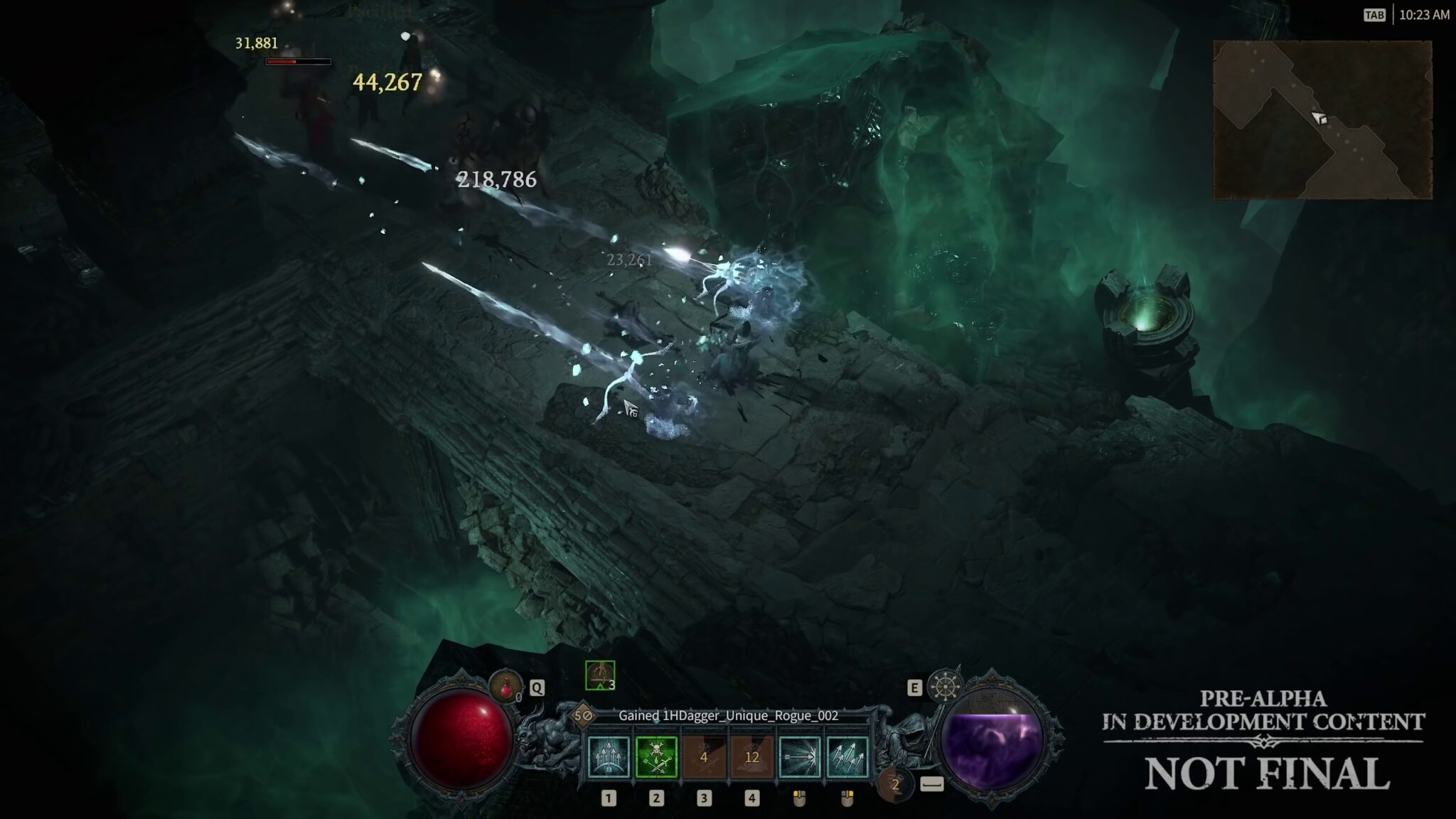
At each of the four edges we find a transition to a new board, where we may choose from which direction we want to enter it. In the centre of each of these continuing boards, a legendary tile awaits us, which rewards us with a particularly powerful force. One possibility for the barbarian, for example, entices us with thirty percent additional damage as long as our rage meter is over half full.
In addition, there are socket tiles to reach, in which we can insert the so-called glyphs (reminiscent of the jewels from Path of Exile). These can be captured at random on our adventures and levelled up in dangerous dungeons. The better a glyph, the more tiles it strengthens within its radius.
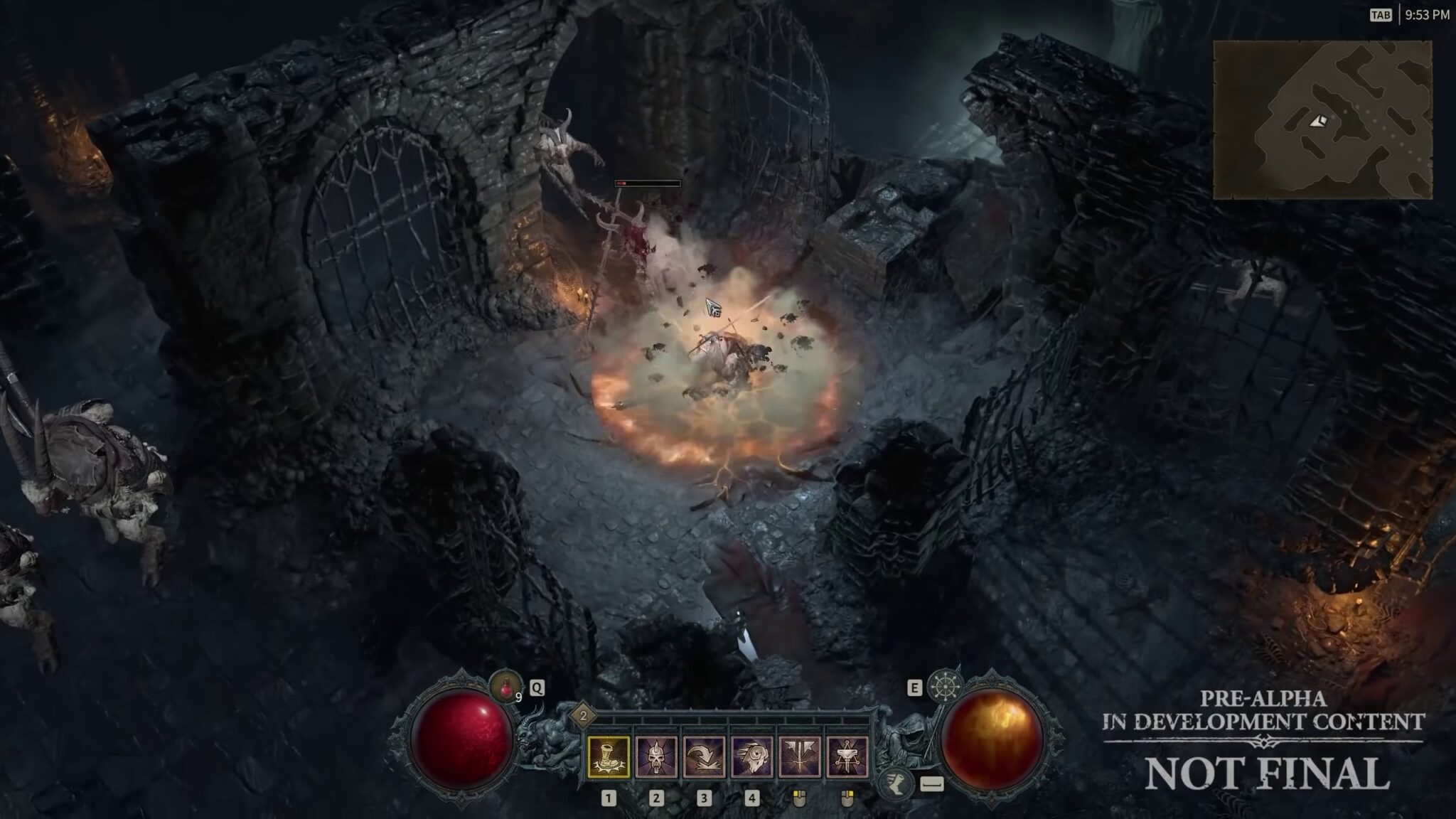
A hero after my own heart
The new focus on more depth is mainly to allow more individuality again and brooding over the most efficient or whimsical builds. It also continues in the second major aspect of character development: equipment.
In addition to the possibility of determining the gender, skin and eye colour, the rough facial features as well as hairstyle and tattoos of one’s own hero, who is now significantly richer in polygons, there are hardly any limits to the choice of items.
Not only because we are allowed to dye and transmogrify them, but because in the future a legendary trait can appear on any rare item. This will then replace the fifth affix and can decisively shape our play style – for example, if a damage bonus beckons for staying within the radius of our own area damage.
Thanks to revised hit zones, these are now much more precise and correspond exactly to the animations or effects displayed. In general, the aim is to achieve an even more fluid combat feeling – hence the new dodge step via space bar.
If we find an item with modest stats but an excellent legendary effect, we can carry it to the new occultist and have the legendary essence extracted. The rest of the item will be destroyed, but the valuable bonus can then be socketed onto any other piece of armour. So gone are the days when a few overpowered items dictated our wardrobe.
Runic and runic words are also making a comeback, albeit in previously unfamiliar forms. Instead of collecting prefabricated words, we use a trigger rune to determine when the effects of the main rune should be triggered. A random buff when drinking a healing potion would be conceivable, for example. An interesting system that gives build tinkerers an extra level.
As the icing on the cake, the combat action also changes depending on the level of our skills and the composition of our equipment bonuses. The stronger we become, the more power our attacks have. Naturally, the enemies react differently to hits depending on their skills and weapons. While a cannibal can melt away horribly thanks to a nasty poison, he simply chars to ashes after a fireball.
All of the announced classes in Diablo 4 are old acquaintances, but definitely have a few new tricks up their sleeves. Among other things, each of them gets a new, unique class mechanic. Often parts of them as well as other abilities have to be unlocked via quests.
The Barbarian: The tried-and-tested hooligan strengthens himself and his party with war cries, jumps at enemies or knocks them over and looks pretty angry most of the time. The game principle has been expanded to include the so-called arsenal. The barbarian can now carry up to two one-handed weapons and two two-handed weapons at the same time and assign them to individual abilities in order to switch between them in a flash.
The Sorceress: The popular sizzle and freeze wonder shoots lightning bolts, icicles and meteors around and is allowed to put up to three actually active abilities into enchantment slots as a special mechanic. Then we can no longer ignite them manually, but from then on they occasionally trigger themselves or modify our play style according to their effect.
The Druid: The shapeshifter has practised a lot and no longer has to change into an animal form for fixed periods of time. Instead, he slips into the skin of a werebear or wolf in a flash for single attacks. His class bonus is that he can unleash devastating blows with any earth ability, stealing a flat percentage of enemies’ maximum life.
The Huntress: As the most versatile class to date, she is a cross between an assassin and a demon hunter. She can stab with two (poisoned) daggers as well as rake her enemies with a bow from a distance. She has three special mechanics in her luggage, but she has to choose one of them: She can either collect combo points with normal attacks and spend them again for strong finishers, pull enemies into the shadow realm and eliminate them there undisturbed or react quickly to weak points in the enemy’s defence and thus cause bonus damage.
The Paladin?: The fifth release class is still being kept secret. Most clues and the overall balance currently point to some sort of paladin or crusader. A shame really, as the necromancer would have deserved to be there from the start again.
Stay a while and stand in line
What continues to concern me is the idea of an MMO-like open world where large clusters form around quest givers. That sounds like a potential atmosphere killer to me with no real balancing value. In the so-called social hubs, I’m supposed to particularly enjoy meeting others, building groups, or trading. Why build groups? Well, no one is forcing us, but apart from the public events, at least the world bosses are supposed to be defeatable only in teams.
It remains to be seen whether a character who has been bred up for months will eventually be able to crack them on his own. Furthermore, the world will be criss-crossed by randomly generated and so-called key dungeons, which sociable natures can tackle with up to three other players. The new camps could also be described as something similar. These are settlements overrun by demons, which can be permanently liberated and into which quest givers and traders subsequently move again.
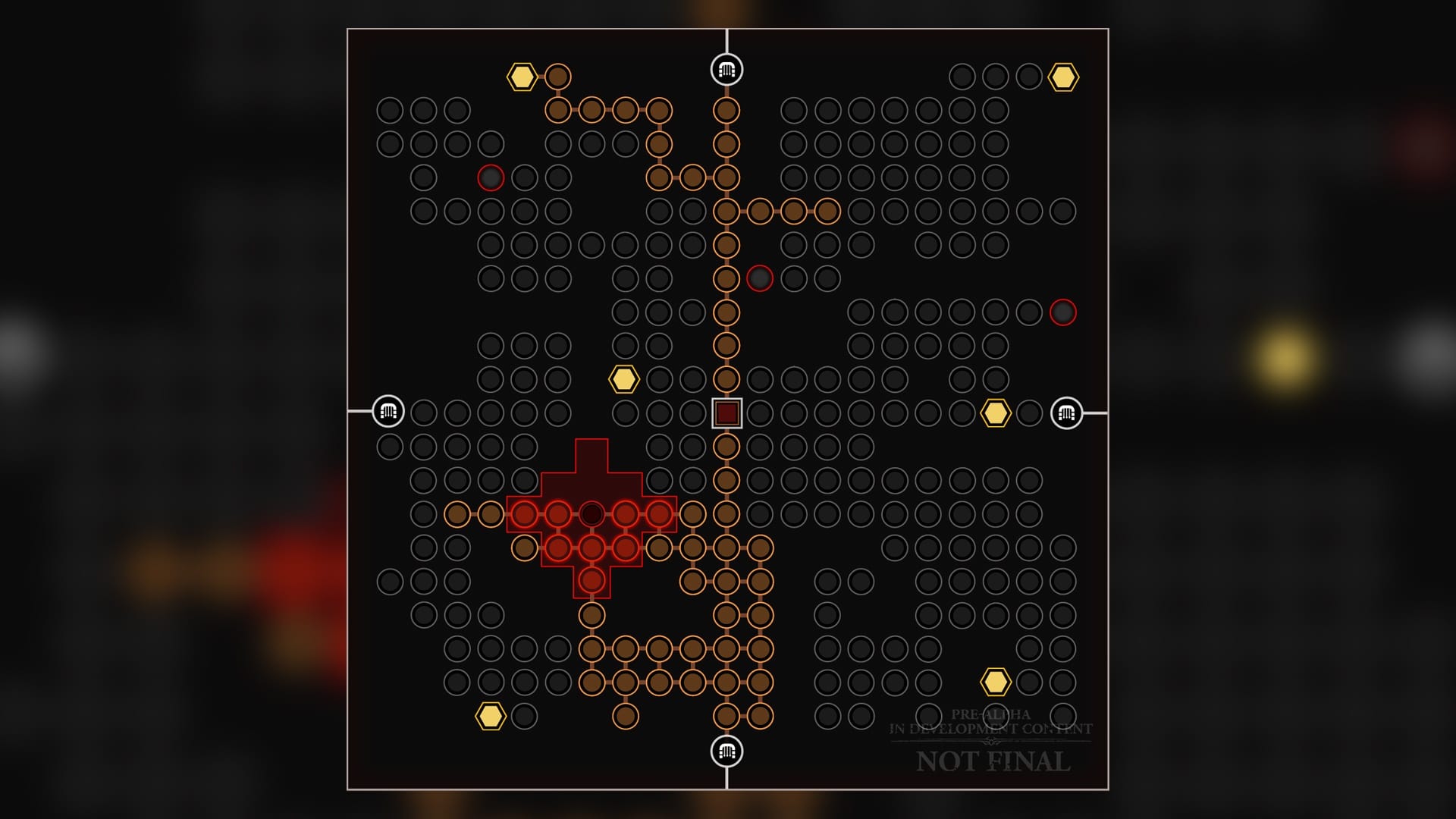
The whole thing then takes place in a kind of story bubble that is instanced and separate from the public world: So no other player can liberate a camp from under our noses. If we want to support a friend in an earlier step, the progress of the group leader applies to everyone. Once we are completely through with a camp, the bubble bursts and we switch to the final public version of the location.
So that we don’t get blisters on the way to all the activities, there are mounts for the very first time in addition to the familiar waypoints. Horses, to be precise, from whose backs we can even perform a stylish battle opening and which can be pimped both visually and in terms of stats.
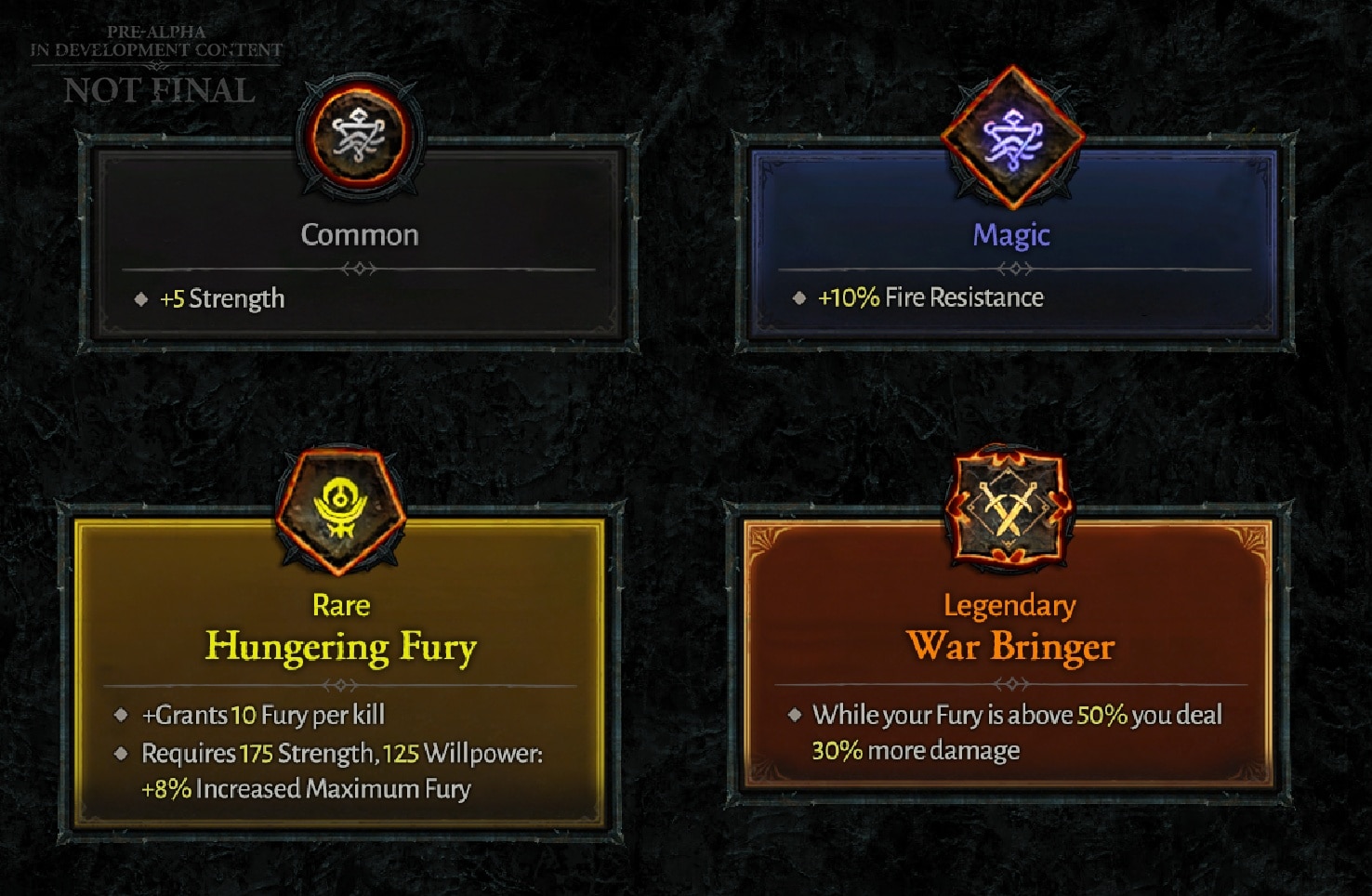
By the way, certain mob types are supposed to always have certain items with them when hunting for fat loot. A bandit, for example, is more likely to carry around crossbows, boots or morning stars, while the coveted two-handed sword would be easier to get hold of elsewhere. What the drops look like is mostly determined by the current area: A one-handed sword is most likely to appear in the desert as a scimitar.
Magical: The blue items only have a single affix, but it is comparatively strong.
Rare: The yellow power packs can have up to five affixes, but they are somewhat weaker than the magic items.
Legendary: These are practically rare items whose fifth affix has been replaced by a legendary one. Its effect can be extracted at the expense of the item and transferred to another.
Unique (replaces Mythic): The treasures anchored in the background story with their own name have unchangeable affixes that also cannot be extracted. They have strongly theme- and class-related characteristics as well as a distinctive appearance.
Take the edge off others
Last but not least, there is the PvP mode, which has not played the biggest role for most Diablo fans in the past, but at least rewards us with fame and exclusive skins. All we have to do is travel to one of the so-called Fields of Hate and complete normal quests and kill monsters there.

This should also give us a particular thrill when, in the best survival style, we have joined forces with a supposed ally and our mutual loyalty becomes shakier with every shard we earn. Oh, I can literally taste the drama. Alternatively, we may directly mark ourselves as hostile and blatantly go on a manhunt.
If we do particularly well, a bounty hunt is called on us and depending on its outcome, our hard-earned shards either end up with one of our henchmen or we pick up an extra reward for surviving a dangerous situation.
The background story even has an acceptable explanation for the whole circus: on the PvP fields, Mephisto’s hatred comes to the surface and makes the heroes unusually aggressive. That’s why the assassins sent out to hunt are actually called vessels of hate. Whether the saying “Let’s become vessels” will prevail in everyday life, however, may be doubted.
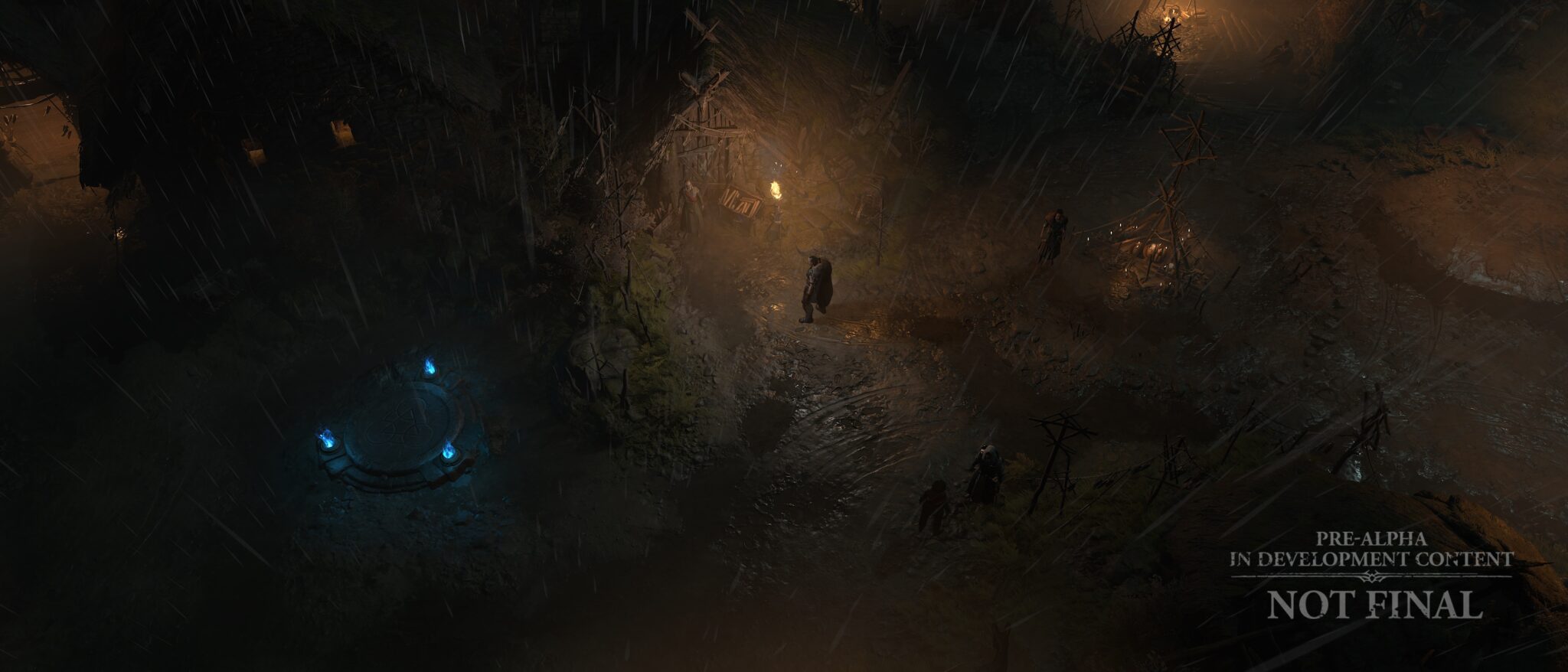
Editorial conclusion
It’s really highly gratifying to see Diablo 4 evolve into a more rounded experience with each entry in the developer diary. Placing itself squarely between Diablo 3 and the excellent, if for many intimidating due to its sprawling endgame, Path of Exile in terms of ambition is exactly the right decision. Especially since this gap is currently only really filled by the remaster of the second part.
In particular, the enormously increased depth in character development is a boon and should produce a thriving build and guide community. After all, players still enjoy tinkering with the perfect attribute and equipment package for their Diablo 2 heroes.
However, whether the open world will ultimately feel like an eerily beautiful playground or an overcrowded crèche is a crucial question that still hovers over part four like a sword of Damocles. After all, the most important story moments are to be kept out of the Shared World via instancing and thus reliably made enjoyable. All in all, Blizzard is setting enough positive impulses here to justify healthy optimism. Keep it up

